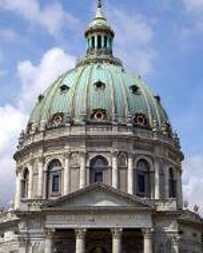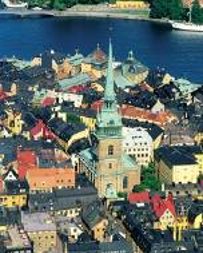TRAVEL DATES
26 June, 2013 - 1st of July, 2013
DESTINATION
Russia
DAY 1
Day 1 (June, 26th) - Moscow
You will arrive very early to Moscow. Driver will be waiting for you by the exit gate and will take you to hotel (early check in is arranged).
At 9 a.m. your guide will meet you at the hotel lobby and will take you on one of the most interesting tours in the world. You will visit the famous Red Square and go inside St. Basil’s Cathedral, built by Ivan the Terrible in the 15th century. Next is the Kremlin and the World War II Memorial on Poklonnaya Hill, as well as the spectacular Cathedral of Christ the Savior, destroyed by the communists and restored only a few years ago. The tour will last about eight hours.
The Kremlin of Moscow is perhaps the most recognizable symbol of Russia and one of the world's most interesting castles. This ancient citadel was constructed in 1147 to defend the city from the Mongols and the Lithuanians. Moscow grew far beyond the original walls since then, but the Kremlin has always remained a symbol of political power in Russia.
Being a part of the Kremlin, the Armoury Chamber, originated as a royal arsenal in 1508, is a true Russian treasure-house. Nowadays it's a museum and home for the Russian Diamond Fund. The Armoury Chamber possesses unique and extraordinary items covering the period from the 5th to 20th centuries. Here you can see the ivory throne of Ivan the Terrible, the Imperial Crown of Russia, Fabergé eggs, some items of golden and silver cutlery, etc.
Lunch is included at local restaurant "Kvartira 44"
St. Basil's Cathedral is one of the most famous works of architecture in Moscow and its silhouette is one of the most recognizable symbols of Moscow and Russia. St. Basil's is not a part of the Kremlin.
Memorial Museum of Cosmonautics
This museum, the only one of its kind, situated inside an enormous monument to the explorers of the cosmos, is well worth the visit, not least for the nostalgia it should inspire in anyone who grew up in the heady days of the space race. The displays trace the history of space exploration, including the first interplanetary satellite flights, the first dogs in space and man's journeys to the space. There's plenty of fun gadgetry, plus an excellently conceived display explaining how astronauts survive a space flight, all of which should be interesting for children. Apart from anything else, the sheer aesthetic beauty of the displays should impress. The other-wordly sheen of the hi-tech materials used to construct space craft is extraordinary when seen close-up and, combined with a host of cosmos-themed artwork, the exhibition is a compelling reminder of the time when space exploration was still viewed unequivocally as mankind's last great adventure.
For and evening activity we have prepared for you: "Kostroma" National Folk Show and dinner at a local Moscow restaurant "Panorama" , right where the show takes place.
Kostroma National Folk Show
If you ask any non-Russian for a list of quintessential symbols of Russian culture, the list will include the Balalaika, vodka, Cossack dancing, Matryoshka nesting dolls, and perestroika. The Russian culture is of course richer than that, and exposing foreigners to the undiscovered, the mysterious, and the unknown is one of the greatest aspects of travel. The concert hall of the Cosmos Hotel stages such a journey into the more mysterious veins of Russian culture: the Russian National Dance Show performed by the Russian National Ballet Company 'Kostroma'. The show is, in its own right, an aesthetic journey into Russia's deep history. The program includes a varied mix of traditional national dance and contemporary ballet pieces. The troupe consists of more than 50 artists with 300 unique costumes decorated with pearls, silver and gold all created and hand-embroidered especially for the show. As one of Russia's most expensive stage shows with its unique music and gripping effects, you will be led into a luxurious and fun tale full of memorable surprises.
DAY 2
Day 2 (June, 27th) - Moscow
Today you will go on a short ride through Moscow’s marble-arched subway paradise before stopping at the city’s best art museum - the Tretyakov Picture Gallery.
During this extensive tour, you will visit very important sites for the Russian history: Poklonnaya Hill and World War II Memorial
The Moscow Subway was constructed by the Soviets not only to streamline the city's transportation, but also to celebrate their accomplishments. The entire system represents work of socialist realism with delicate crystal chandeliers and twisting granite columns. On top of immense cultural value, the Moscow Subway is a super-efficient transportation powerhouse that carries three million passengers daily and spans the entire city in a star-like fashion. It can also serve as a nuclear shelter in war time.
The Tretyakov Picture Gallery is Moscow's most famous collection of art and one of the world's top art galleries. The gallery began as the private collection of wealthy Moscovite merchant Ivan Tretyakov, who lived in the 19th century and donated his collection to the city.
Lunch is included
By 3 p.m. we will take you back to Luzhniki Stadium, where Rugby First Day Competition starts.
Day 5 (July, 1st) - End of the Tour
Today is the final day of your tour. Your driver will take you to the airport.










